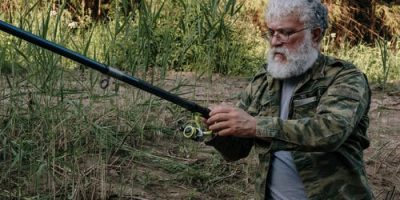People who enjoy freshwater fishing will have one or two reservations about the activity. One can ask if the moon has anything to do with the quantity of catch they get.
Is Freshwater Fishing Impacted by the Phases of the Moon?
Serious fisherman understands that the moon cycles have an impact on all species of fish. As a result, they frequently dodge fishing during a full moon, as popular knowledge retains that fishing is bad during the two days preceding and instantly following a full moon.
During the day, a full moon, sometimes known as a “fishing moon,” causes havoc with fish. The moon cycles have an impact on everything that dwells in the water, just as they do on the tides. This is also true for freshwater fish.
Hints on Full Moon Fishing
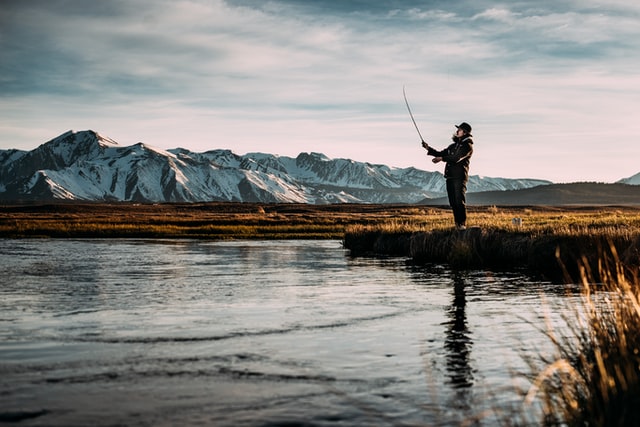
When the moon is full, there is no excellent fishing. According to traditional knowledge, the conclusion of a lunar cycle reduces your odds of anchoring a fish two days before and after a full moon. And because the moon influences the tides, it’s no surprise that many fishers feel this way.
Sadly, the full moon disrupts the fish’s patterns. If you intend on going out on or closing the full moon, here are some recommendations to assist you to catch some fish.
👍 Know Where to go
When it’s high tide or a full moon, get closer to the coast for a better chance of success. The moon’s phases are intimately related to tides and the volume of water flowing to and from the sea.
When the moon is full, the volume of water that comes in during the rising tide increases. Extra water might be beneficial if you’re an angler wanting to catch a large one. And because of greater tidal volumes, some larger fish swim inland over longer distances than they would usually.
These large swimmers will move to the flats in search of their favored meal, which means that if you’re searching for big bonefish or other permitted fish offshore, you could end up empty-handed.
👍 Take Note of the Bait
The most common error fisherman make when attempting to land fish during a full moon is employing the same old strategies used during every other moon phase.
However, because the baitfish are acting differently, the predators will as well. When fishing as per the moon phases, you should keep an eye out for changes in the behavior of the baitfish.
A full moon, most of the time, indicates more insects and tiny crustaceans like shrimp. You’ll find some of the larger fish species wherever these critters go.
👍 Learn About how the Moon Impacts other Creatures
Freshwater fish are affected by the full moon. Although rivers and lakes do not have genuine tides, freshwater fish seek comparable insects and tiny invertebrates, such as crawfish.
And because this prey appears in swarms during a full moon, the freshwater fish that hunt it will be present as well. During a full moon, largemouth bass is highly active.
They feed in frenzies on baitfish schools and tiny crustaceans that feed on zooplankton at the bottom of freshwater sources.
👍 Plan your Fishing Trips Based on the Phases of the Moon
The Farmer’s Almanac has a plethora of information for anglers, including a list of the finest fishing days of the year. These dates are based on lunar phases and are divided into major and minor categories.
When the moon is exactly overhead or below your latitude, major periods occur. When the moon is 90 degrees on each side of your baseline, a minor period occurs.
👍 Observe the Moon and Fish Behavior
Individual fish species’ behavior is also influenced by these main and minor intervals. Bluegill and bass both deposit their eggs at a full moon. Fish also prefer to congregate on the surface during full moons, owing to the intense lunar light that draws them.
Biologists are unable to explain why the full moon influences certain fish activity, but it is apparent that the moon impacts the water. As a result, the tides affect the result of your fishing journey.
Night Fishing Tips When the Full Moon Rises
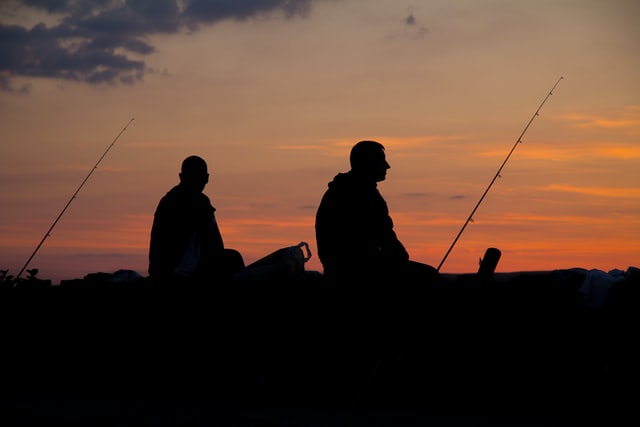
❕ Don’t Be Late
Arrive at your preferred location before sundown to avoid having to navigate in the dark.
❕ Arrive Prepared
After dark, a strewn-out tackle box and fishing rods and reels on the boat’s deck might result in a broken tackle or a swift tumble overboard. So keep the deck tidy and avoid disasters by selecting a few good lures for night bass.
❕ In Clear Water, Move Slowly
For fishing in clear water when bass crawls into the surface or hug the bottom at dusk, use a slow-moving bait like a plastic worm. Gradually elevate the worm by elevating the rod tip to approximately 11 or 12 o’clock and then lowering the rod so the worm falls back to the bottom.
❕ Strike in the Murky Water
If the water at your nighttime location is discolored, focus on the shallow cover. Three to four fast pumps of your rod tip will present the jig, then reel up the slackline and begin another sequence of fast pumps.
❕ Spinnerbaits should be Tossed in the Wind
On windy nights, spinnerbait is great for catching aggressive bass. Pull the blade bait through rocky banks, into standing wood, or over sunken brush piles at a steady speed. These spinner bait fishing nights may be some of the most enjoyable, with bass biting at your bait as you fire it through the water.
❕ Make Some Clangor
On calm evenings, cast a loud topwater chugger or prop bait for bass floating near the surface. Boat docks with lights are ideal targets for evening topwater techniques.
Sunken brush piles on docks typically retain bass, and the lights glowing from boathouses draw shad and sunfish to the surface. The baitfish activity finally pulls bass to the surface, where they ambush food beneath the docks.
Reasons why Fishing at Night is Preferable
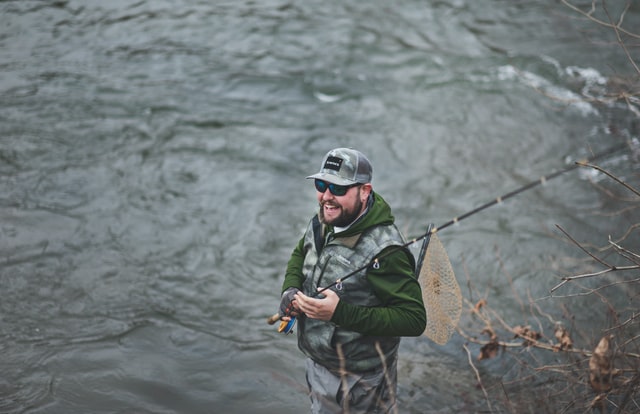
The early bird gets the worm, as the maxim goes. The night owl, on the other hand, catches fish, and fish taste much better than worms. Before you plan your next fishing trip, consider the following reasons why a night adventure may be preferable to one in full daylight.
🎣Chance to See a New Environment
There are some things that you may notice while fishing at night that you just cannot see during the day. When irritated, an algae-like species emits a dazzling neon glow. It’s a sight to behold, but you can’t view it during the day for clear reasons.
🎣Fewer People in the Vicinity
There will be fewer people and it will not be packed. It will be easy for you to move around, and you will have no competition while collecting your batch.
🎣No Sunburns
When you fish by moonlight rather than sunlight, you avoid both risks. Nobody who enjoys fishing can declare to have never gotten a sunburn from a full day of fishing.
🎣Various Active Fish
While tides and moon phases have an important influence, many species appear to be active at night. One cause for this is the moon’s phase. Some fish become more active in bright light. It makes it simpler for them to locate the bait. That is one of the reasons why fishermen advise against fishing the day following a full moon.
🎣There is Less Competition
People, for the most part, do not sleep at night. Those who are normally working at night, so you won’t see them out fishing. Fishing at night means fewer people, and fewer people means little to no competition.
Fishing at Night 101

The majority of people who enjoy fishing do it in the early hours of the day. However, many fishermen prefer to fish after the sun has set. If you are new to this hobby, here are the fundamentals you should know about night fishing.
➖Learn to Adopt
Anglers are used to seeing what they’re doing and monitoring the line or the lure when fishing during the day, but this is rarely achievable at night. There is less night fishing, which might be difficult for folks who are used to fishing during the day.
Your vision is better on moonlit evenings than on dark or gloomy nights, yet others argue that bright nights are best for fishing than nights. Using external-source lighting as little as possible is a good idea for some forms of fishing, but it is unneeded for others.
Even if you have excellent instinct and a natural feel for your tools, a compact lamp is a piece of essential equipment for night fishing since it liberates both hands while emitting only a modest portion of light.
➖Multiple Rods Should Be Rigged
Keep a few rods on hand with several lures or baits on them to avoid the need to use lights to re-rig your outfit. If you’re using a bait-casting outfit and receive a bad backlash, you may set that rod away and use an already-rigged spare.
If you’re susceptible to backlashes with bait-casting tackle, try switching to spinning gear at night, especially if the situation doesn’t need precise lure placement close to cover.
➖Know your Area
If you’re tempted to plan a last-minute fishing excursion to an unfamiliar location, don’t. Instead, while it’s still light, spend some time getting to know the area where you’ll be fishing.
Make a list of potential roadblocks and even draw a map of your route. It’s far simpler to fish in an area you’re comfortable with than in one you’re unfamiliar with. When casting, it’s also advisable to take your time and focus on one region at a time rather than rushing about.
➖Maintain a Low Level of Noise
You should constantly strive to be quiet and covert, especially when operating a speedboat. Noise from dropping the electric motor into place, running the motor continually, shifting items around, and tossing an anchor overboard will work against you.
When on a boat, you should float over to your destination with the engine turned off and keep your actions inside to a minimum. Certain regions require noise, but if you are unfamiliar with the area, it is best to keep it to a minimum.
➖Be Extra Cautious About Your Safety
Landing and unhooking fish taken on multiple hook lures is more difficult in the dark, so sit down in a solid posture. Similarly, take caution not to break your balance and fall into the water when standing in the boat.
In the daytime, you can typically brace for a crash with an item, but in the dark, you might effortlessly be jerked off balance and out of the boat when it collides with anything.
Maintain a clean boat and have a space for everything. Things should not be left underfoot, especially hooked baits. Ensure you have a high-powered floodlight on hand to notify an incoming motorboat of your sight, particularly if you’re in a tiny ship with no navigation lights.
Getting Ready for a Fishing Trip
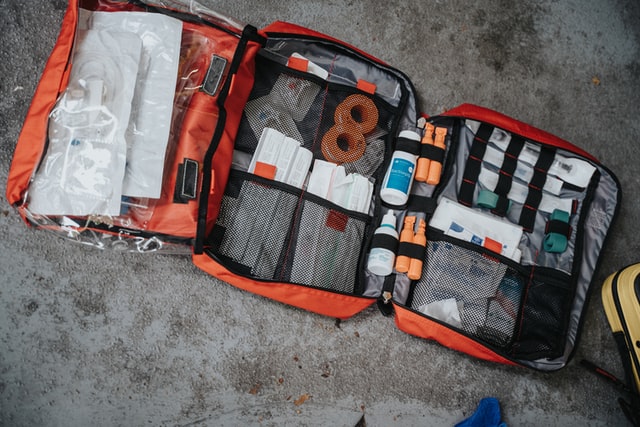
The most important thing you can do to assure a fantastic fishing excursion is to pack appropriately.
✔️High-quality Rain Gear
Purchase the best equipment you can afford, which includes more than simply a jacket. In a strong downpour, waterproof trousers, boots, caps, and gloves will all keep you dry.
It’s easy to get damp on a long boat journey or a stroll to your fishing area. The correct gear will enable you to fish securely all day, even in the middle of a storm.
✔️Water Shoes
When wandering in lakes, rivers, or the ocean, good-quality wading shoes will protect your feet and safeguard you from sliding on rocks. I prefer close-toed shoes created expressly for wading, but sandals would work if you are fishing from a boat.
✔️Protective Hat
A decent hat will decrease glare, allowing you to see fish or structures beneath the water while shielding your face, neck, and ears from the sun. Baseball-style caps are not as protective as full-brimmed hats.
✔️First Aid Kit
It may just contain the essentials, but it is useful for treating the occasional cuts and scrapes, bug bites, headaches, and other issues that may arise while you are outside.
✔️Rods and Reels
If at all feasible, use the equipment provided by your resort or outfitter. If you must carry your own, simply bring what you need and leave room for a spare.
✔️Baits
Check with local fly/tackle stores and outfitters for present fishing conditions and recommendations on the best lures, flies, and methods. Local stores are excellent tools for determining precisely what you will require.
✔️Duffel Bag
Pack your clothes in an enormous waterproof duffel to keep them safe on boat travels.
✔️Line and Leader
If you’re using your own gear, always pack extra line and leader material.
✔️Boots
Waders and boots are hefty and take up a lot of room, so I wouldn’t bring them unless required. If you do, it’s a good idea to look for a lightweight, low-cost set that can be simply packed away. Bring a large, heavy bag or two to store them in if they become wet on the way home.
✔️Insect Repellant
If you allow them, bugs will ruin your trip. Usually, a small amount is sufficient to keep them at bay.
✔️Medications
If you take medications, ensure to have your prescription filled well in preparation and, most crucial, bring them with you in your carry-on if traveling. If your checked luggage goes lost, you don’t want to be parted from these.
Frequently Asked Questions
Q: What is the ideal moon phase for freshwater fishing?
A: It is considered that the ideal time to fish is between the new and full Moons.
Q: Is it preferable to fish during the new or full moon?
A: The premise behind moon phase fishing is that the higher the tide, the more lively the fish. The highest tides occur biweekly: during a new moon when the sun and moon are both tugging in the same direction, and during a full moon, when they are tugging on opposite sides of the earth.
Q: Is a Supermoon a good time to go fishing?
A: A supermoon might be a significant impact on certain fishermen who are sight fishing or fishing the tides. The stronger the power exerted by the moon on tides and wildlife behavior, the closer it is to Earth.
Q: What is the optimum moon phase for bass fishing?
A: Bass bite the best over a seven-day period that includes a new moon on the fourth day of the week. Bass also eat vigorously during the full moon week, so fish three days on either side of the full moon.
Q: When is the ideal time of day to go fishing?
A: Fish prefer the early morning and evening sun to the hot noon heat.
Final Thoughts
The clarity that a full moon provides fishermen may make a trip very enjoyable. Full moons are particularly thrilling since they require you to break out of old routines and reconnect yourself with your prey to bring in a large catch.
When fishing with a full moon, the fish are frequently more active. Tidal effects will be stronger due to the full moon. This can increase the water level at high tide, and make the fish more active.


